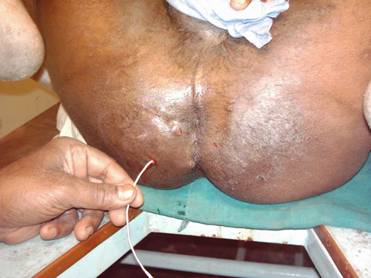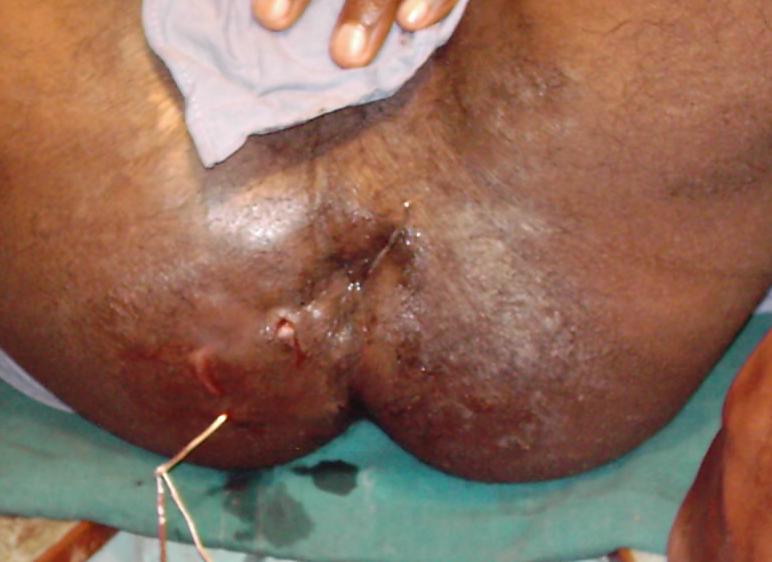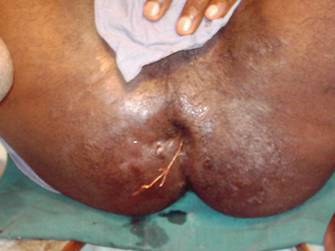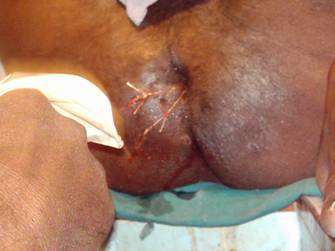| << Home |Last Updated: 03-AUGUST-2014| Free Consultation | Fistula in Ano | Preparation of Kshar Sutra | Application | Meet Specialist | About Kshar Sutra | Buy Medicines | Consultation | Contact Us | |||||||||||
Method of Application of Thread (Kshar-Sutra) | |||||||||||
|
After the patient is examined thoroughly and selected for this treatment, routine investigations are completed and in selected cases the fistulogram is also done. He is advised to take a mild aparient a night prior to the application of thread in order to have clean bowels and to attend the ano-rectal clinic the next morning. For application of the thread the patient is placed in the lithotomy position and the perineum is cleaned with antseptic lotions and draped with sterile towels. A tray containing sterilized instruments(Figure 5) including specially designed probes of different sizes, is kept ready on the right side of the surgeon. The index finger of the hand is then gently introduced into the rectum and the inner opening of the fistula is located as far as possible.
The two ends of the thread are tied outside the anal orifice firmly. It may be mentioned that this is a painless process and the patients do not need any anaesthesia for initial passing or successive change of the thread. It is important to tie the thread neither too tight nor too loose, since a tight thread will cut through the tissues rapidly and thus will not permit the desired action of the caustics on the fibrous wall of the fistula. A too loose thread will not cut through the tissues at all and will unnecessarily hamper healing of the wound .A moderately firm grip of the thread is just sufficient to give optimum desired results. After the thread is applied , the wound is dressed with anti-inflammatory and analgesic drugs in oily base and the patient is sent home with medicines and instructions to be carried during the next seven days after which he is again called and the thread is changed.
He is advised to take a simple diet and adjust his bowel movements by mild aperient for the next 4 days .He is advised to take sitz baths for 10-15 minutes every day during the first week. Changing of the thread requires no special technique. A fresh tread is tied to the origional thread near the knot and is guided gradually through the other end by railroad technique. The previous thread is removed and replaced by a fresh one.The changing of the tread is done at weekly intervals till it spontaneously falls out. The length of thread removed at every sitting is measured and results plotted on a graph (figure 8) .This gives an idea of the rate of cutting in each individual. It is to be emphasized at this place that the cutting through the tissues is usually synchronous with the healing of the wound; that is to say that the wound produced by the thread in one week's time simultaneously heals up completely during the next week while the fresh wound is being created by the migrating tread. In some cases where the healing and cutting are uncoordinated; the cutting is controlled by loosening or tightening the grip of thread and changing the threads at suitable intervals. In majority of the cases the healing and the cutting are well coordinated in one-week's time. |
|||||||||||




